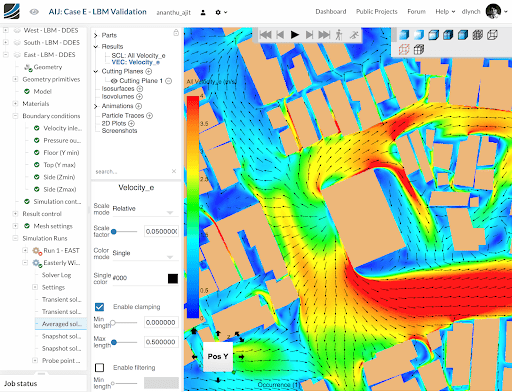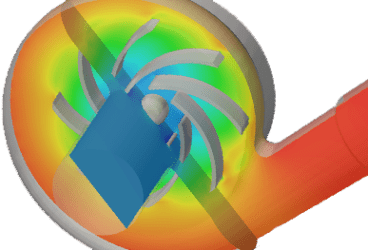The following blog explores a SimScale wind comfort public project that can be accessed to copy or follow along, and a webinar video to explain each step. Pedestrian wind comfort is a function of mean velocity, and therefore, the data presented by the Architectural Institute of Japan (AIJ) cases are normalized velocities at listed point locations at a pedestrian level. We can also explore the transient wind modelling data obtained in the simulation to understand how other factors such as gusts would affect pedestrians.
Wind Modelling AIJ - Architectural Institute of Japan
AIJ publishes a series of validation cases to be used to test solvers specifically in the pedestrian wind comfort application and range in complexity through wind modelling. AIJ Case E consists of simplified building shapes in building complexes, where the city was based upon an area in Niigata, Japan.

Wind Modelling Modern Wind Modelling: Lattice-Boltzmann Solver Validation
To obtain highly accurate results for pedestrian wind comfort, it is necessary to perform a validation benchmark, as well as understand the setup used to obtain valid results. Once this is completed, general findings and outcomes can be used as a template for setting up highly accurate simulations in the future.
Lattice Boltzmann Methods (LBM) are CFD algorithms which use collision theories to predict fluid behavior.
Some advantages are:
- Less computational time
- Less computational power
- Simple and easy procedure
- Robust (handles bad geometry well)
- Transient phenomena
Wind Modelling Simulation Test Case: AIJ Case E
In this SimScale simulation project, the objective was to simulate wind through Niigata city after a proposed construction. Once computational fluid dynamic (CFD) results were obtained, they were then compared to those obtained in an atmospheric boundary layer wind tunnel to assess the accuracy of CFD results. Comparing these results sets is essential to understanding the sensitive settings and general approach necessary to obtain accurate results. Once completed, probe signals were then post processed for further significant findings.
To watch the full webinar and learn how to run the simulation yourself step-by-step, click on the banner below!
Wind Modelling Atmospheric Boundary Layer
The accurate definition of the boundary layer wind profile is crucial to correctly simulating the pedestrian level wind environment. The ABL, Velocity and Turbulence profiles given by AIJ were applied via tabular CSV input.
To view, follow or copy the simulation public project on SimScale, find it here.
Wind Modelling AIJ Case Validation Summary
In the wind modelling simulation, even though the mesh lattice was larger, it ran 7x faster than steady-state openFOAM comparatively. In all tested wind directions of the project (North, East, South, and West) the LBM solver from SimScale proved to be slightly more accurate. The simulation completed the objective, and found that online wind simulation can prove to be as or more accurate than standard atmospheric boundary layer wind tunnel testing. To learn more, check out the public project on SimScale.



